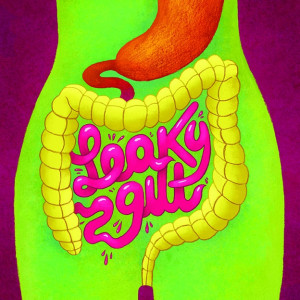Naturopath Tania Flack talks to Dr Margaret Smith, pioneer of the Wellness Genomic test that allows people to tailor their diet according to their genes.
DNA testing has become common since the release of the findings of the human genome project in 2003. While DNA testing performed in a hospital is used to diagnose and prevent disease, second-generation genomic and nutrigenomic testing, available from naturopaths, nutritionists and GPs, is designed specifically for use in personalised healthcare.
During March 2019 we’re offering the chance to win a Genomic Wellness test, along with a Gut Microbiome test, and two consults with our naturopaths to discuss your results and tailor an individualised diet plan. More details here.
Meet Dr Margaret Smith, molecular geneticist and scientific director of smartDNA, a provider of nutritional and genetic testing in Australia.
How can genetic testing improve our health?
Understanding your individual genetic profile allows you to make healthier choices now. DNA testing provides people with comprehensive information about their unique genetic profile. Genomic Wellness testing investigates genes that influence specific biological pathways and how they impact a person’s health over their lifetime. It is the ultimate in personalised, predictive and preventive healthcare.
What about weight management?
A range of genes impact body composition and genetic variations of any number of these genes can influence how easily weight is gained or lost. For example, the FTO gene can affect a person’s ability to sense when they are full, so variations in this gene can lead to poor leptin signalling and overeating. Other gene variations increase the risk of carrying weight around the middle, snacking or addictive food behaviours. High protein diets are popular for weight loss, but may not be the best choice for everyone: the success of this approach may rely on individual genetic expression. Designing a diet that takes individual genetic variations into account helps people manage their weight effectively.
What about the Mediterranean diet?
This diet is known to reduce cholesterol and overall cardiovascular risk. However, studies show it may actually increase cholesterol and contribute to cardiovascular risk for people with certain genetic variations. For example, some people are more sensitive to saturated fats than others and some have genetic variations that predispose them to elevated low-density lipoproteins (‘bad’ cholesterol).
Do genes impact detoxification?
Our body’s ability to detoxify chemicals and pesticides and to safely metabolise hormones relies on genes controlling the detoxification pathways. For example, variations in genes associated with oestrogen metabolism may increase the likelihood of oestrogen-dependent conditions, like fibroids and fibrocystic breast disease. If a woman has variations of these genes, then further testing can measure her ability to safely metabolise oestrogen.
Can testing help us make better dietary choices?
There is a range of genes that control our ability to effectively metabolise nutrients from food. Variations of these genes may explain why some people become nutritionally depleted more easily than others, despite having a healthy diet. Understanding how genes affect your ability to utilise certain nutrients lets you tailor your diet to your individual needs.
Can genetic testing improve sports performance?
Genetic variations associated with oxygen delivery, fast and slow twitch muscle fibres, and lactic acid removal have an impact. Other genes, such as those associated with cortisol and inflammation, are important in exercise recovery. Knowing your individual expression of these genes lets you tailor your training to reduce risk of injury, promote recovery, and optimise performance.
Case study: Matty Clarke
Athlete Matty Clarke has forged a successful career on the Australian Ironman circuit. He was looking for something to give him an edge in competition, and decided to get DNA testing done. “The test showed I needed to change certain aspects of my diet and training, and support glutathione production for muscle recovery,” he says. “I worked with my practitioner to fine-tune my nutrition and drop some supplements I had been taking and, since then, I have increased my weightlifting ability by 12 percent.”
DNA Wellness Genomics is the ultimate in predictive, preventative, personalised health care and will provide you with information on several key areas of health.
Discuss taking a DNA test with one of our practitioners today.
This article first appeared in Nature & Health magazine.






